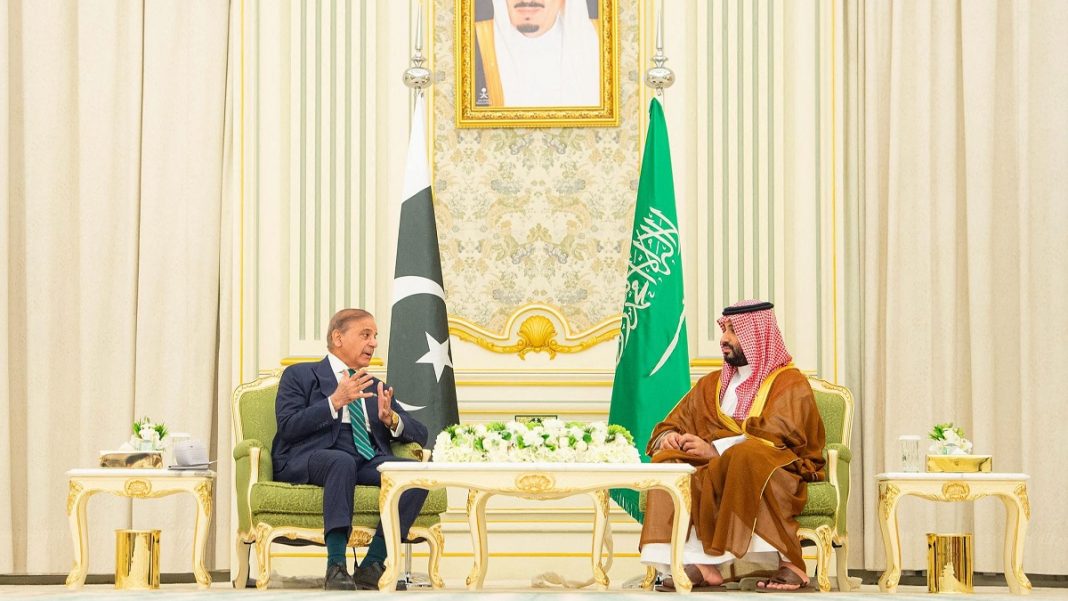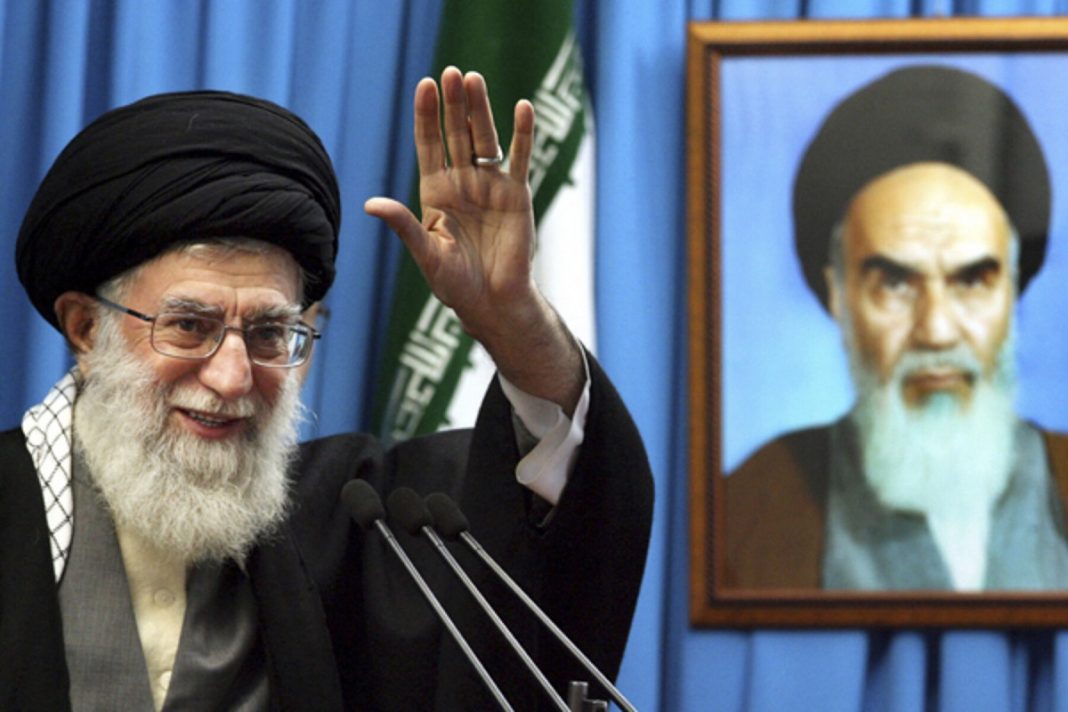Gabriel G Tabarani
The Saudi-Pakistan Strategic Mutual Defense Agreement (SMDA), signed on September 17, 2025, has now been in force for just over a month, yet its ripple effects across the Middle East and South Asia continue to unfold. What was at first dismissed by some as symbolic diplomacy has since proven to be a serious statement about how both Riyadh and Islamabad are recalibrating their positions in a rapidly changing regional order. The pact, born of crisis and calculation, represents more than military cooperation; it is an emblem of shifting alliances in an increasingly multipolar world.
The context of its birth remains essential. In early September, Israel’s strike on Hamas officials in Doha shocked the Gulf and cast doubt on Washington’s willingness—or ability—to restrain its closest ally. Within days, Pakistan’s Prime Minister Shehbaz Sharif flew to Qatar in solidarity, accompanied by his powerful army chief, Field Marshal Asim Munir. Their subsequent stop in Riyadh set the stage for a sweeping defense pact between two long-time partners. The agreement’s central clause—that “any aggression against either country shall be considered an aggression against both”—was deliberately sweeping, echoing NATO’s Article 5 and projecting unity at a time of deep uncertainty.
The ambiguity surrounding the pact’s scope, particularly whether it implies a Pakistani “nuclear umbrella” for the kingdom, has fueled both fascination and anxiety. Pakistani Defense Minister Khawaja Asif initially hinted that all military means were covered before walking back his comments. Saudi officials, for their part, have avoided clarification. But strategic ambiguity is itself a form of deterrence. Riyadh now enjoys the perception of being shielded by a nuclear-armed ally, while Islamabad gains renewed prestige as a capable security actor beyond South Asia.
For Pakistan, the SMDA marks its most assertive foreign policy move in years. It transforms decades of informal defense cooperation into a formalized partnership. Pakistani pilots trained Saudi airmen as early as the 1970s, and Pakistani troops have long been stationed in the kingdom under bilateral security arrangements. What has changed is the political intent: this time, Pakistan is positioning itself as a pivotal security player in the Islamic world. The move also dovetails with Munir’s vision of Pakistan as a “fortress of the Muslim world” and supports Prime Minister Sharif’s economic diplomacy aimed at attracting tens of billions in Gulf investment.
Saudi Arabia, meanwhile, views the pact as part of a broader effort to diversify its defense partnerships and reduce reliance on Washington. After years of frustration with U.S. policy in the region—culminating in the muted American response to Iranian and Israeli strikes—Riyadh has been looking for ways to hedge. The SMDA provides precisely that. It reinforces Saudi defense capabilities through access to Pakistani expertise and technology, while signaling to Washington that the kingdom has alternatives if U.S. support continues to appear conditional or transactional.
The deal also aligns closely with Vision 2030, Crown Prince Mohammed bin Salman’s grand modernization program, which seeks to localize over half of Saudi defense production within five years. Pakistan’s established defense industries, from missile systems to combat drones, offer the kind of practical partnership Riyadh needs to accelerate that goal. Recent meetings of the Pakistan-Saudi Bilateral Defense Industrial Forum have already discussed co-production ventures and technology transfers that could transform the kingdom’s defense sector.
Still, the SMDA is not only about weapons or military posturing. It also has deep economic and geopolitical roots. Pakistan remains heavily dependent on Saudi oil and financial aid, and the pact bolsters Islamabad’s leverage at a time of fiscal fragility. In return, Riyadh can count on Pakistani manpower, intelligence cooperation, and a degree of regional legitimacy that few other Muslim-majority states can offer. In short, both countries gain: Pakistan secures patronage and relevance; Saudi Arabia secures deterrence and diversification.
Yet, the pact’s implications extend beyond the two signatories. Its timing has introduced new complexities for the United States and China alike. Washington, despite its ongoing defense relationships with both Riyadh and Islamabad, now faces the prospect of diminished exclusivity in Gulf security. President Donald Trump’s decision late last month to extend an executive security guarantee to Qatar—an implicit response to the Israeli strike—has not reassured Gulf capitals as intended. Instead, it has highlighted a growing perception that American protection now comes with caveats, and often, too late.
In contrast, China has greeted the Saudi-Pakistani pact with strategic silence—and that silence speaks volumes. Beijing’s deep economic and defense ties with Islamabad through the China-Pakistan Economic Corridor naturally position it to benefit indirectly. As Saudi Arabia strengthens defense collaboration with Pakistan, it also draws closer to China’s orbit, especially in fields like arms manufacturing, infrastructure, and civilian nuclear energy. Pakistan already operates Chinese-built Hualong One reactors, and Riyadh has shown interest in adopting the same model, particularly as negotiations with Washington over nuclear cooperation remain deadlocked.
The SMDA, therefore, fits neatly into a broader geopolitical realignment. It creates a new triangle linking Saudi Arabia, Pakistan, and China—each pursuing different goals but converging around shared interests in autonomy from U.S. pressure. This alignment may not yet rival Washington’s entrenched military presence in the Gulf, but it undoubtedly weakens America’s monopoly over regional security arrangements.
Still, both Saudi and Pakistani ambitions face limits. Pakistan’s armed forces remain primarily oriented toward deterring India, and any large-scale military commitment in the Gulf would be politically risky and logistically difficult. Riyadh, too, must tread carefully: India is now one of its largest trading partners, and the kingdom’s economic strategy depends on global stability, not confrontation. The SMDA, in practice, is likely to focus on joint training, air-defense cooperation, intelligence sharing, and defense-industrial integration rather than warfighting commitments.
One month on, the agreement has become both a symbol of opportunity and a test of restraint. It signals a gradual erosion of the U.S.-centered Gulf order and the emergence of a more fluid system in which regional powers hedge, balance, and diversify their partnerships. It also exposes the contradictions of the post-American moment: even as Riyadh and Islamabad seek autonomy, both still rely on Washington’s technology, financial networks, and—when convenient—its diplomatic weight.
The Saudi-Pakistan defense pact does not herald a new alliance bloc or an imminent nuclear umbrella. Instead, it captures the logic of 2025: pragmatic hedging in an uncertain world. For Pakistan, it is a bid for economic and strategic relevance; for Saudi Arabia, a reminder to Washington that it has choices; and for China, an unspoken opportunity to expand influence without overt confrontation. Whether this experiment matures into a durable partnership or fades into diplomatic symbolism will depend on how Riyadh and Islamabad manage the balance between ambition and realism. But one truth is clear as of late October: the Gulf’s security architecture is no longer America’s alone to shape.
This article was originally published in Arabic on the Asswak Al-Arab website


